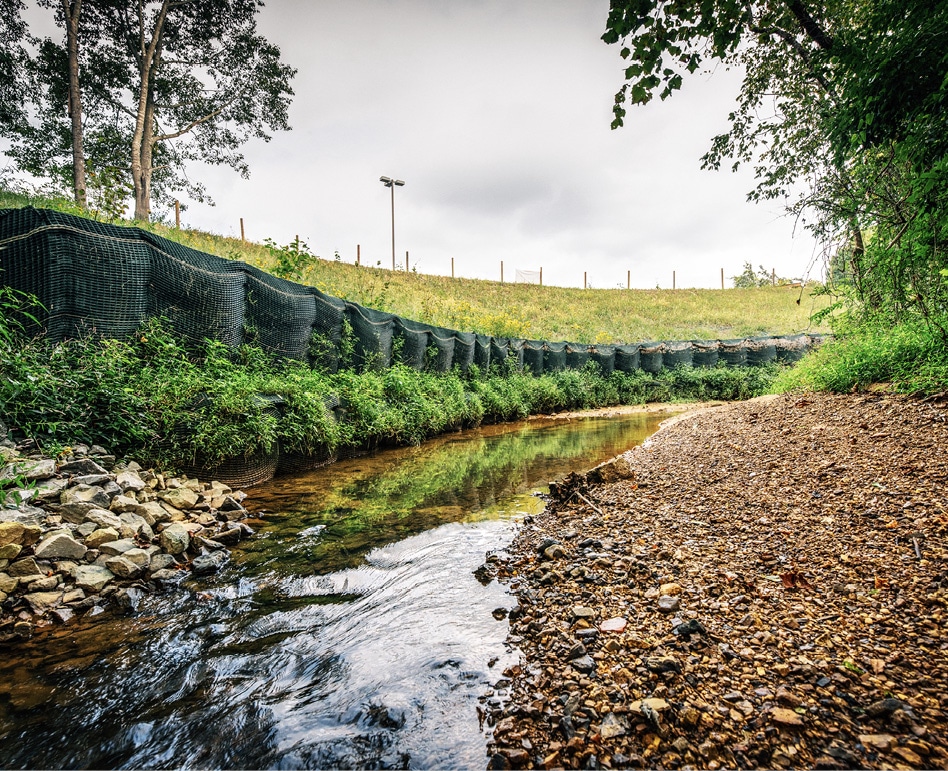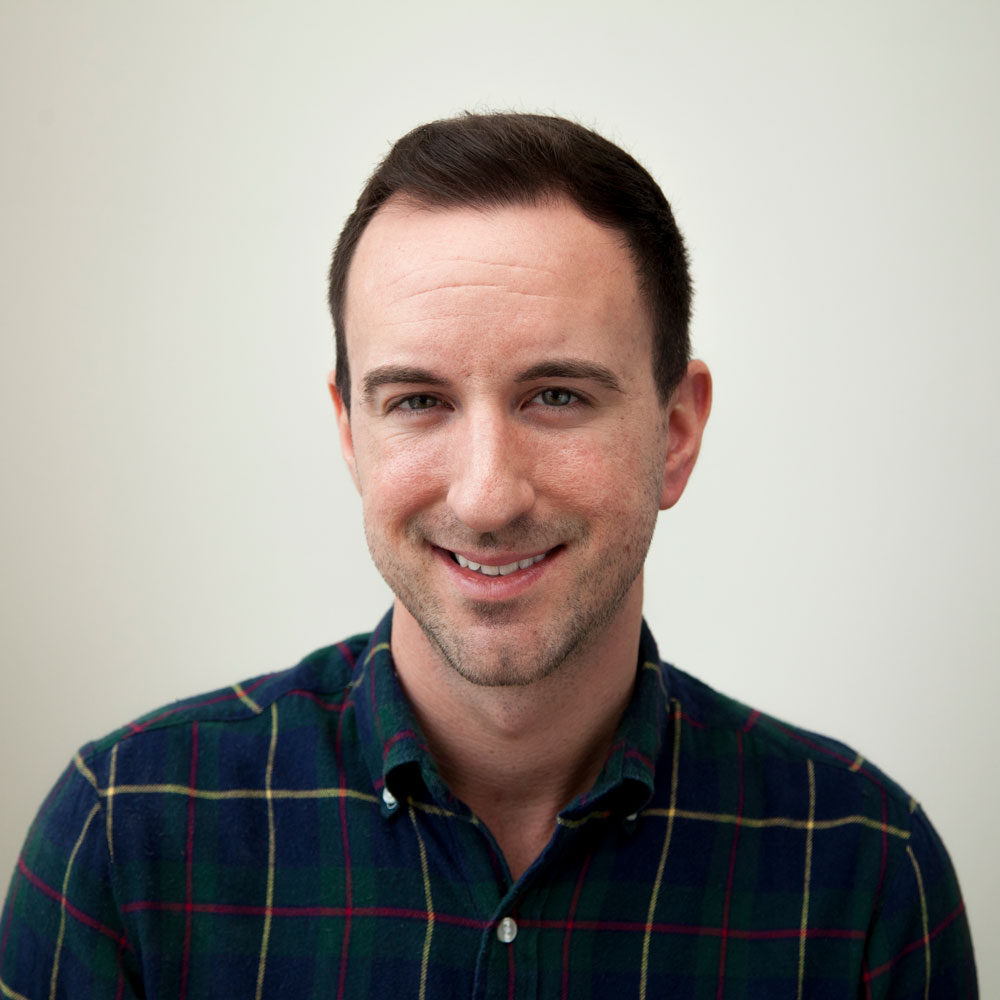Propex lays out sustainable erosion control solutions that save customers money.

Propex combats erosion by stabilizing soil and providing sediment retention while allowing vegetation to flourish. [Photo: Courtesy of Propex GeoSolutions]
It’s becoming harder to ignore the environmental and human costs of rising coastal waters and increased flooding caused by climate change, and those in the sustainable infrastructure business are taking notice. “About 20 years ago, the issue of erosion became a serious problem,” says Lee Pierce, vice president of development at Propex GeoSolutions, a Chattanooga-based designer and manufacturer of erosion control systems. “Low-lying coastal areas have been hit especially hard.”
In response to the growing threat from natural disasters, Propex has engineered a suite of erosion control and stabilization armoring systems utilizing High Performance Turf Reinforcement Mats (HPTRM) that combat erosion along channels, streams, and coastal areas by providing soil stabilization and sediment retention while allowing native vegetation to flourish.
Why is erosion control so important? Pierce explains that municipalities, as well as industrial and agricultural facilities, must comply with stringent standards in the Clean Water Act that regulate pollutants released in stormwater runoff. “The National Pollutant Discharge Elimination System basically requires you to get a permit to discharge stormwater,” Pierce says. He detailed how stormwater runoff can erode soil in channels and drainage ditches, carrying with it pollutants that harm aquatic habitats and foul groundwater.
FROM OUR NOV+DEC 2018 ISSUE

The preferred publication of leading green professionals.
“The way it works is, when seed or turf is established, the roots grow down through the mat and into ground beneath. When it’s fully vegetated, it’s nearly impossible to pull out of the ground.”
—
Randy Thompson, Propex GeoSolutions
Not all erosion control solutions are equal, though. Hard-armor techniques like concrete blocks or rock riprap have long been used along much of the nation’s waterways. Yet according to Randy Thompson, market segment manager for flood control at Propex, these systems are costly and fail to remove pollutants from stormwater in the way natural vegetation does.
“The environmental benefits of grass-reinforced channels using Propex vegetated armoring systems is that it will remove pollutants from stormwater runoff,” Thompson says. “And because it’s permeable, it’s a great method for encouraging infiltration and containing some of the flood water upstream. With hard structures, the water just runs off.” These features are essential for revitalizing wetlands and promoting healthy natural habitats.
And it isn’t just government regulations driving the transition to sustainable solutions. “One thing we’re running into more is that customers want green infrastructure,” Pierce says. Hard-armor systems emit enormous amounts of greenhouse gases during the manufacturing and transportation processes. According to Pierce, concrete and rock riprap produce 10,000 times more carbon pollution than the firm’s ARMORMAX Engineered Earth Armoring System.
Propex isn’t the only player in the HPTRM market, but the firm has led the industry with its focus on in-house engineering and excellent customer relations. “We’re changing the industry through education,” Thompson says. “We’ve built a product line of solutions that is customizable to any application.”
Before moving forward with any erosion control solution, find out which system works best for your project’s specifications.
SCOURLOK
For any below-water scour protection needs, SCOURLOK is the ideal solution. This powerful engineered bank stabilization system can withstand extreme hydraulic stresses while promoting vegetation that improves water quality by removing pollutants from runoff. “SCOURLOK is a really interesting way to get vegetation down to the waterline while still providing hard protection from erosion,” Thompson says.
The system is composed of rigid cells armored with an HPTRM and lined with nonwoven geotextiles that can be filled with earth or mulch to sustain plant growth. SCOURLOK can also be combined with other Propex Geosolutions, such as ARMORMAX, for a complete slope stabilization and erosion control system along canals, streams, and coastlines.
ARMORMAX
The success of ARMORMAX, an erosion control and slope stabilization system composed of HPTRMs and Engineered Earth Anchors (EEA), speaks for itself. “After Hurricane Katrina, the U.S. Army Corps of Engineers (USACE) was charged with rebuilding the levees around New Orleans, and we immediately began meeting with the USACE on how ARMORMAX might be used,” Thompson says. But for a project of this magnitude, any solution had to be thoroughly tested.
USACE partnered with Colorado State University to build the world’s largest wave overtopping simulator to test levee reinforcement materials, and ARMORMAX performed exceptionally well. The favorable testing resulted in an approximately $300 million levee armoring program in New Orleans, where more than 1 million square yards of ARMORMAX has already been installed and up to another 2 million in armoring projects are yet to be installed.
PYRAWALL
PYRAWALL is a wrap-faced HPTRM solution used to build reinforced earth walls and steepened slopes. Fiber-composite bracings secure the slope internally while small openings in the mats allow vegetation to take hold, providing erosion control while offering a more aesthetically pleasing alternative to rock or concrete.
“When a customer would rather have a green wall instead of a hard-faced wall, and vegetation fits into the scope of the design of the project, PYRAWALL is the best solution,” Thompson says. PYRAWALL has an impressive diversity of applications, ranging from highway embankments to residential developments. It also has a 75-year design life, making it a cost-effective solution that doesn’t require frequent replacement or maintenance.

